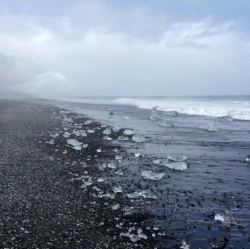
Records of carbon dioxide in the atmosphere millions of years ago support current predictions on climate change, say scientists. Evidence from the last warm period in the Earth’s ancient past suggests the climate will respond as expected to rising CO2 levels. The research, published in Nature, is in line with future predictions from the IPCC, says the UK-led team.
The evidence came from ancient plankton fossils drilled from the ocean floor. These creatures’ shells contain clues as to how the global climate cycled from cool to warm many times some 2.3 to 3.3 million years ago, across what researchers refer to as the Pliocene and Pleistocene Epochs in Earth history. Scientists from the UK and Australia used this ancient climate record to reconstruct the CO2 content of the planet’s atmosphere, comparing it to a separate record of CO2 acquired from bubbles of ancient atmosphere trapped in ice drilled from the poles.
"We have shown that the change in Earth’s temperature for a given change in CO2, once the effect of the growth and retreat of the highly reflective continental ice sheets was taken into account, was not only identical during both the cold Pleistocene and warm Pliocene periods, but was also similar to the understanding recently summarised by the Intergovernmental Panel on Climate Change (IPCC)," said co-researcher Dr Gavin Foster of the University of Southampton.
"This implies that as we approach a Pliocene-like future, the IPCC range of climate sensitivity is likely to be suitable for describing the degree of warming we should expect."
